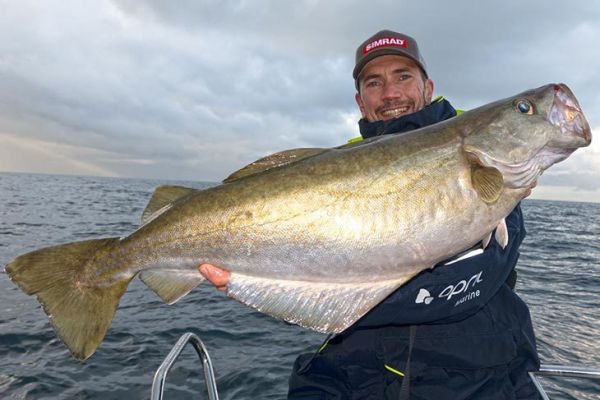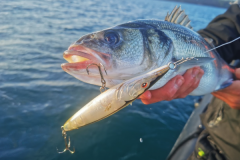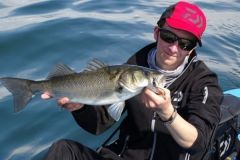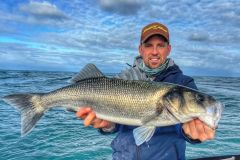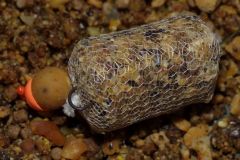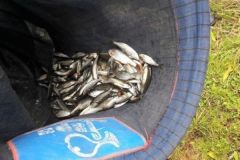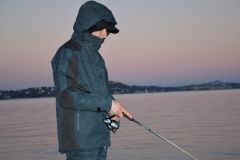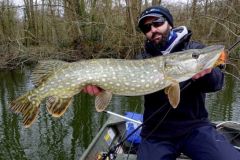Scientific name
Pollachius pollachius (Linné, 1758)
Morphology
A particular feature of the pollack, which distinguishes it from the saithe, is the curved lateral line on the pectoral fins, which is black on the lighter sides, while that of the saithe is whitish on the darker sides. Pollack have three dorsal fins and two anal fins. Its fins have no spiny rays. The lower jaw is more advanced than the upper. Its coloring is greenish-brown on the back, and light on the belly and flanks, with irregular yellow spots.
In short: yellow pollack = yellowish fish with dark lateral line and dark pollack = dark fish with light lateral line. This rule is more difficult to apply to young pollack.
Fishing spots
Pollack swim close to rocky, algae-covered bottoms. They can also be found on large shipwrecks at depths of over 25 m, and hidden behind large submerged rock heads at depths of over 15 m. Juvenile yellows often remain in port areas.
Fishing techniques
The pollack is not enduring and gets tired after 10 seconds of chasing, which is why it approaches its prey slowly and accelerates at the last moment to seize it as soon as it is cast. Hence the fishing strategy: on a pollock station, touch the bottom with a soft lure or a sand eel and slowly work your way up to mid-height.
Pollack is a powerful fish to start with, but tires quickly. Individuals weighing over 4 kg feed on big bites: oily fish over 20 cm or cuttlefish.
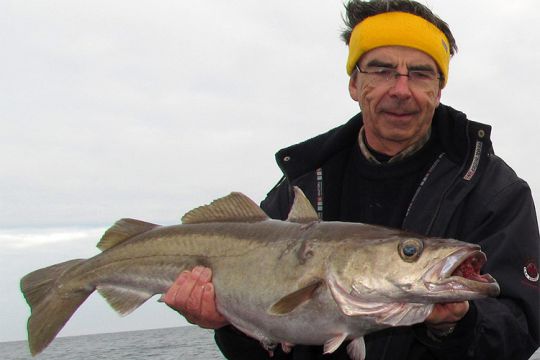
Reproduction
A pollock becomes an adult in its fifth year. It then weighs 2 kg and measures 60 cm, demonstrating its relatively rapid growth. Lake Trout spawn in March offshore on wrecks and other submerged refuges, then some of the larger spawners take refuge in deep water at depths of 100 to 150 m.
Size and weight
- Legal minimum size: 30 cm
- Size at sexual maturity: 41 cm
- Average size: 30 to 60 cm
- Maximum height: 1.30 m (18 kg)
- French record: 11.8 kg (Ouessant Island, Brittany, 30/08/1981)
Good to know
The pollack is a peculiar hunter, following its prey slowly to attack by surprise when the prey no longer expects it.

 /
/ 